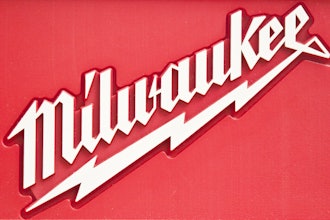When phosphate fertilizer manufacturer Mosaic Co upgraded piping in its Riverview, FL sulfuric acid plant from cast iron to stainless steel alloy, it relied on PipePak piping design and analysis software from Algor, Inc to help verify and improve the design. The new stainless steel material promised lower corrosion and fewer bolted flanges -- reducing the risk of leaks -- which would increase the system's operational life by an estimated 15 years or more, and lower maintenance costs dramatically. However, Ken Gaver, PhD, a non-destructive testing support engineer with Mosaic's Reliability Dept, uncovered some alarming concerns about the proposed design during testing with PipePak software.
"Results from PipePak showed that thermal stresses were much higher than expected," said Gaver. "This was because the design did not adequately consider the difference in cross-sectional thickness. Cast iron is very thick compared to stainless steel. Additionally, the respective materials react to heat transfer very differently."
Gaver redesigned the piping system to account for the thinner cross-section and thermal expansion properties of stainless steel. PipePak analysis results confirmed that the revised design would withstand the expected operational loads.
"By using PipePak, we prevented almost certain failure of a $600,000 piece of piping," said Gaver. "Over the life of the piping, the savings could amount to millions of dollars -- mostly as a result of fewer 'down' days. This project was a good example of why ASME piping codes require engineering analysis prior to installation."
Computer Simulation at Mosaic
Headquartered in Plymouth, MN, Mosaic has more than 8,000 employees worldwide and produces phosphate, potash, and nitrogen products for crop and animal nutrition and industrial uses.
"At Mosaic's Riverview plant, the Reliability Dept is tasked with maintaining all 'stationary' equipment including piping, storage tanks, and pressure vessels," said Gaver. "We use Algor finite element analysis software for both a design capability and a 'forensic' capability to examine equipment failures. For example, a pipe wrench failed in service and Algor static stress analysis was performed to determine the design flaw. We chose Algor over other analysis software packages because it is easy to use and provides a wide range of simulation capabilities for handling our needs."
Modeling and Analyzing the SS Piping Section
The Riverview plant processes 800 tons of sulfuric acid per day. For the new stainless steel piping, the objective of the PipePak analysis was to verify that stresses resulting from operational loads complied with the ASME B31.3 process piping code.
Gaver created a model of a piping system section (approximately 29 ft long x 36 ft wide x 21 ft high) by defining the geometry in the PipePak spreadsheet. The easy-to-use interface allowed him to accurately and conveniently define the piping section with built-in tools for specifying features including pipes, bends, reducers, valves, anchors, supports, tees, forces, flanges, and material properties. The outer diameter of the pipes varied between 8-24 in. with a wall thickness varying between 0.25-0.315 in. Material properties for Austenitic stainless steel were selected from a built-in library using temperature-dependent allowable stress data. Force loadings (7,200 and 15,000 lbs) were applied at bends in the piping section to simulate the inertial forces of the sulfuric acid fluid.
"The pressure in the piping system was low, only about 100 psi, but the temperature was 250 deg," explained Gaver. "Because the thermal expansion coefficient of stainless steel is about two times that of cast iron, the temperature loading created large thermal stresses."
After the analysis was run, Gaver examined the results in the graphics environment, which can display system properties and results for all load cases including stress, forces, and moments, deflection and mode shapes.
"I displayed the code stress ratios for each load combination and immediately realized there was a problem," Gaver recounted. "The maximum code stress ratio was more than five times the desired value. The color-coded graphics display showed that stresses where the piping attached to pumps were excessive. In addition, PipePak let me examine a tabular report of the stresses for all points."
Based on the results, Gaver revised the model by adding four piping runs to increase flexibility in the piping section and better allow for thermal expansion. Working iteratively, he incrementally changed the model and tested it until he was satisfied that the PipePak results showed the piping system was in compliance with code requirements.
"The approved design was installed and the new stainless steel piping section has performed as expected with no problems," Gaver said. "Using Algor PipePak to simulate the piping section allowed us to verify compliance with the ASME B31.3 process piping code and helped avoid a potential design failure that would have been very costly.
"Algor has proven to be a highly functional and useful tool in our efforts," added Gaver. "We will continue to use PipePak to analyze all new piping installations."





















